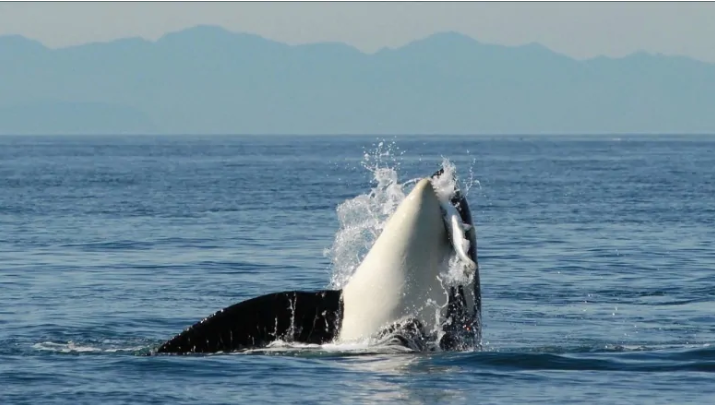
Poisoned bodies, dangerous blobs and dissolving snail shells: the threats facing the killer whale family J pod read like a horror film.
The resident orcas of British Columbia’s South Coast have no natural enemies, but the toxins in their environment are creating unnatural threats that could wipe out the entire population of the Salish Sea’s top predator, scientists say.
J pod is one of three orca families that belong to the endangered southern resident group. They are among the most-studied whales in the world and scientists say pollutants in the ocean, and the water itself, could be what’s killing them.
A CBC podcast, Killers: J pod on the brink, hosted by Gloria Macarenko, examines the range of threats facing B.C.’s southern resident killer whales.
Peter Ross, vice-president of research at Ocean Wise and a marine mammal toxicologist, says the southern residents are the marine mammals most contaminated by polychlorinated biphenyls (PCB) on the planet.
Research suggests global killer whale populations could collapse in as little as 30 to 50 years because of exposure to PCBs.
The carcinogens are banned in Canada, but PCBs linger in the ocean for a long time and whales accumulate the toxin in their body tissue. A female killer whale can live up to 70 years — and the longer a whale lives, and the more contaminated salmon they feast on, the more PCBs they store in their bodies.
“They affect normal development, the immune system, reproductive health and brain development,” says Ross, who said the dangerous chemicals can also be passed on to calves through their mothers’ milk.
Ross says PCB levels in southern residents are likely causing hormonal and reproductive problems — and for the endangered orcas, every birth, and death, matters.
The southern resident population is reported to be at a 30-year low and their mortality rate is high — around 50 per cent of babies die in their first year.
Attack of the killer blob
The fragile food chain is also threatened by temperature changes in the ocean.
In 2015 and 2016 a large mass of water at least 2 C warmer than normal, nicknamed “the blob,” loitered in the Pacific Ocean and wreaked havoc on the ecosystem.
According to Brian Hunt, biological oceanographer at the University of British Columbia, in 2016 B.C. had the warmest surface waters on record, and there were “substantially reduced growth rates of juvenile salmon during that year.”
Scientists also noticed large numbers of zookplanton in the blob that are normally found off northern California, not Canada. Salmon rely on zooplankton for food, but the ones found in the warmer waters have much less nutrition.
“Changing ocean conditions are impacting the foundations of the ocean ecosystems and the plankton communities that support the food webs,” explained Hunt.
Souring seas and sea butterflies
The ocean isn’t just getting warmer, it’s also getting increasingly acidic.
The oceans absorb about 30 per cent of carbon dioxide produced by humans, the United Nations says.
Since 1997, the oceans have absorbed man-made heat energy equivalent to a Hiroshima-style bomb being exploded every second for 75 straight years, according to a 2016 study published in Nature Climate Change.
This CO2 intake is changing the chemistry of the water and this is having a ripple-effect on the food chain.
Salmon off the South Coast munch on pteropods, which are swimming sea snails that live at the surface of the ocean and float freely on the current in a fashion that has earned them the name sea butterflies.
These salmon snacks have shells made of calcium carbonate and the acidity of the ocean is now dissolving those shells, endangering this integral food source.
The snails can repair their shells, but the energy they use to do so exhausts them and can lead to premature death.
Iria Gimenez, researcher at the Hakai Institute, studies the impact of ocean acidification in the Salish Sea. At her lab on Quadra Island, she tests a sample of water that measures 428.2 for CO2.
“That’s basically 400 parts per million,’ said Giminez, who explained the number would have been closer to 270 before the Industrial Revolution.
Those numbers will keep rising as more carbon is pumped into the atmosphere, risking more changes to the ecosystem.


